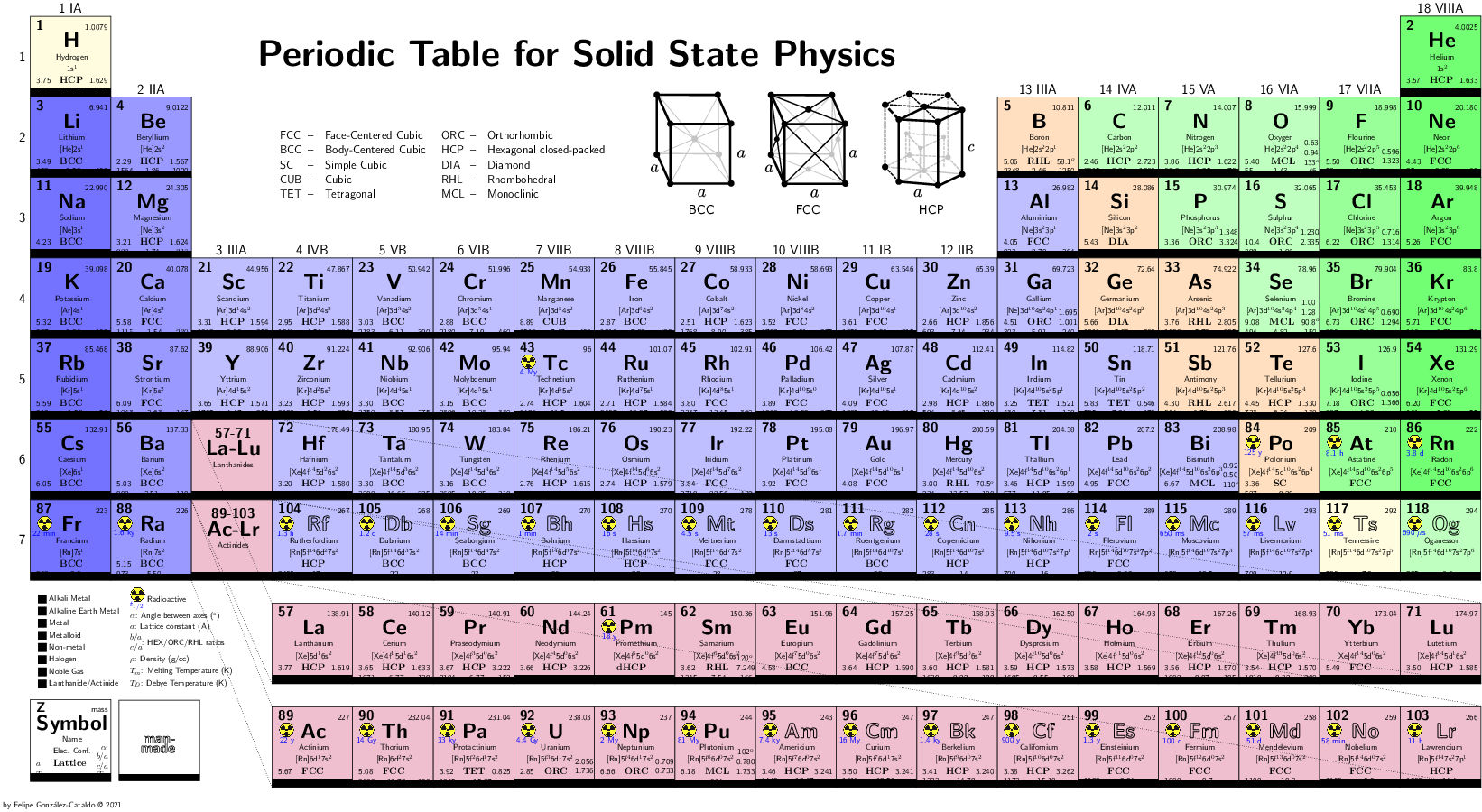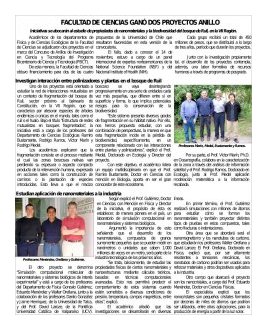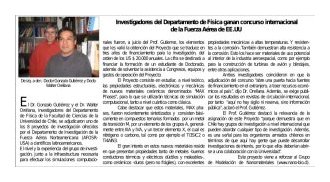Current Projects, 2016
- Study of impurities, complex defects, and grain boundaries in CdTe thin films using computer simulation at the atomic scale, FONDECYT Grant No. 1130437, March 2013-March 2016. Head. Eduardo Menéndez-Proupin
Finished Projects (2012--2016)
- Mechanical properties of bulk metallic glasses: a computer simulation study, FONDECYT Grant No. 1120603, March 2012- March 2015. PI: G. Gutiérrez, Co-PI: Eduardo Menéndez
- Project Anillo ACT-1115, Física de plasmas, potencia pulsada y biología celular para la energía, vida y medio ambiente, (PI: L. Soto); Gonzalo Gutiérrez (Associate Researcher), Sergio Davis, Felipe Gonzalez, (Researcher) 2012-2015.
- Project Binacional Chile-Argentina ANPCyT-Conicyt ACE-01, Simbiosis fusión-fisión: conceptos innovativos para energía nuclear, (PI: L. Soto), Gonzalo Gutiérrez, Co-PI, 2012-2014
- Project Materiales y Energía, Desarrollo y caracterización de materiales nanoestructurados bajo condiciones extremas en sistemas de generación de energía (NANO-EXTREM), Ministerio de Economía y Competitividad Español, U. Politécnica de Madrid, 2012- 2015, (PI: Raquel Gonzalez), Gonzalo Gutiérrez (Foreigner collaborator)
- International Project Atomic Energy Agency (IAEA) Investigations of Materials under High Repetition and Intense Fusion–relevant Pulses, (PI: L. Soto), Gonzalo Gutierrez, Co-PI, 2012-2014
Project PIA ADI-24
- Computer simulation laboratory of Nanomaterials and Biological Systems of Experimental Interest
Project Anillo ACT24/2006
See here  Δ
Δ
Drs. Gonzalo Gutiérrez and Eduardo Menéndez from the University of Chile, Dr. Danilo González from the University of Talca, Dr. Walter Orellana, currently at the Andres Bello University, Dr. Jaime Henríquez from the University of Talca, and Dr. David Laroze, currently at the University of Tarapacá, were awarded one of the projects within the framework of the Science and Technology Research Rings contest of the Science and Technology Bicentennial Program (PBCT). The project entitled "Molecular Computational Simulation of Nanomaterials and Biological Systems of Experimental Interest" aims to study:
- Nanostructured Materials
These are solids that are made up of nanoscopic grains, and that generally exhibit superior physical properties than their conventional, larger-grained counterparts.
- Carbon nanotubes
These are currently the subject of intense theoretical and experimental research, exploring their extraordinary electrical and structural properties that make them ideal for applications in nanometer-scale electronic devices.
- Nanomagnetism
Another interesting issue that will be considered in this proposal is the study of magnetism in nanostructured materials and in low-dimensional systems.
- Semiconductor nanoparticles
Semiconductor nanoparticles have been proposed for biological applications in fluorescence microscopy, DNA arrays, and immunofluorescence assays.
Sources:
- Boletín Informativo de la Facultad de Ciencias de la Universidad de Chile In Situ, Nro. 17 pág. 6, noviembre 2006.

- Semanario Universidad de Talca, Nro. 78 pág. 3, noviembre 2006.

Papers Project Anillo
2008
 Dynamics of a rotating particle under a time-dependent potential: exact quantum solution from the classical action,
Dynamics of a rotating particle under a time-dependent potential: exact quantum solution from the classical action,
D. Laroze, G.Gutiérrez, R. Rivera and J. Yáñez,
Physica Scripta 78, 015009 (2008). Strength of polycrystalline coarse-grained platinum to 330 Gpa and of nanocrystalline platinum up tu 70 Gpa from high-pressure x-ray diffraction data,
Strength of polycrystalline coarse-grained platinum to 330 Gpa and of nanocrystalline platinum up tu 70 Gpa from high-pressure x-ray diffraction data,
A. K. Singh, H-P. Liermann,Y. Akayama, S. K.Saxena, and E. Menéndez-Proupin,
Journal of Applied Physics 103, 063524 (2008). Stability and bonding properties of finite single-walled carbon nanotubes adsorbed on Si(001),
Stability and bonding properties of finite single-walled carbon nanotubes adsorbed on Si(001),
W. Orellana,
Applied Physics Letters 92, 093109 (2008). Structural and vibrational properties of amorphous GeO2 a molecular dynamics study,
Structural and vibrational properties of amorphous GeO2 a molecular dynamics study,
J.Peralta, G. Gutiérrez and J. Rogan,
J. Phys.: Condens. Matter 20, 145215 (2008). Dynamics of two interacting dipoles,
Dynamics of two interacting dipoles,
D. Laroze, P. Vargas, C. Cortes, G. Gutiérrez,
Journal of Magnetism and Magnetic Materials 320, 1440-1448 (2008).
2007
 A theoretical study of Fe adsorption along Bi-nanolines on the H/Si(0 0 1) surface,
A theoretical study of Fe adsorption along Bi-nanolines on the H/Si(0 0 1) surface,
R.H. Miwa, W. Orellana and G.P. Srivastava,
Applied Surface Science 254, 96–98 (2007). Stability and electronic properties of vacancies and antisites in BC2N nanotubes,
Stability and electronic properties of vacancies and antisites in BC2N nanotubes,
J. Rossato, R. J. Baierle, and W. Orellana,
Phys. Rev. B 75, 235401 (2007). A detailed analysis of dipolar interactions in arrays of bi-stable magnetic nanowires,
A detailed analysis of dipolar interactions in arrays of bi-stable magnetic nanowires,
D. Laroze, J. Escrig, P. Landeros, D. Altbir, M. Vázquez and P. Vargas,
Nanotechnology 18 (2007) 415708. Magnetostatic interactions between two magnetic wires,
Magnetostatic interactions between two magnetic wires,
R. Piccin, D. Laroze, M. Knobel, P. Vargas and M. Vázquez,
EPL 78 (2007) 67004. Realistic rotating convection in a DNA suspension,
Realistic rotating convection in a DNA suspension,
D. Laroze, J. Martínez-Mardones, J. Bragard and C. Perez-García,
Physica A 385, 433–438 (2007). Thermal convection in a rotating binary viscoelastic liquid mixture,
Thermal convection in a rotating binary viscoelastic liquid mixture,
D. Laroze, J. Martínez-Mardones and J. Bragard,
Eur. Phys. J. Special Topics 146, 291–300 (2007). Classical spin dynamics of four interacting magnetic particles on a ring,
Classical spin dynamics of four interacting magnetic particles on a ring,
D. Laroze and L.M. Pérez,
Physica B (2007), doi:10.1016/j.physb.2007.08.078. Dissection of the Components for PIP2 activation and Thermosensation in TRP Channels,
Dissection of the Components for PIP2 activation and Thermosensation in TRP Channels,
S. Brauchi, G. Orta, C. Mascayano, M. Salazar, N. Raddatz, H. Urbina, E. Rossenmann, F. González-Nilo and R. Latorre,
Proceeding of the National Academy of Sciences, 2007, 104(24):10246-10251. In-silico nano-biodesign. A new frontier in computational biology,
In-silico nano-biodesign. A new frontier in computational biology,
R. Cachau, F. González-Nilo, O. Ventura and M. Fritts,
Current Topics in Medicinal Chemistry, 2007. 2D autocorrelation, CoMFA and CoMSIA modeling of protein tyrosine kinases inhibition by substituted pyrido[2,3-d]pyrimidine derivatives,
2D autocorrelation, CoMFA and CoMSIA modeling of protein tyrosine kinases inhibition by substituted pyrido[2,3-d]pyrimidine derivatives,
J. Caballero, M. Fernández, M. Saavedra and F.D. González-Nilo,
Bioorg. Med. Chem., (2007). Intrinsic electrostatic potential in the BK channel pore: Role in determining single channel conductance and block,
Intrinsic electrostatic potential in the BK channel pore: Role in determining single channel conductance and block,
I. Carvacho, W. González, Y. Torres, S. Brauchi, O. Alvarez, F.D. González-Nilo, and R. Latorre,
J. of General Physiology, 2007.
Project AFOSR-USA FA9550-06-1-0540
The Research Department of the North American Air Force (AFOSR-USA), awarded one of the eight research projects for Latin American scientists, to Dr. Gonzalo Gutiérrez and Dr. Walter Orellana, both members of our nanomaterials group.
This project aims to study the structural, electronic and mechanical properties of new ceramic materials called "MAX Phases", this will be done with the help of computational simulation techniques both at the quantum and classical levels.
Source: Boletín Informativo de la Facultad de Ciencias de la Universidad de Chile In Situ, Nro. 12 pág. 10, junio 2006.
LINKS:





